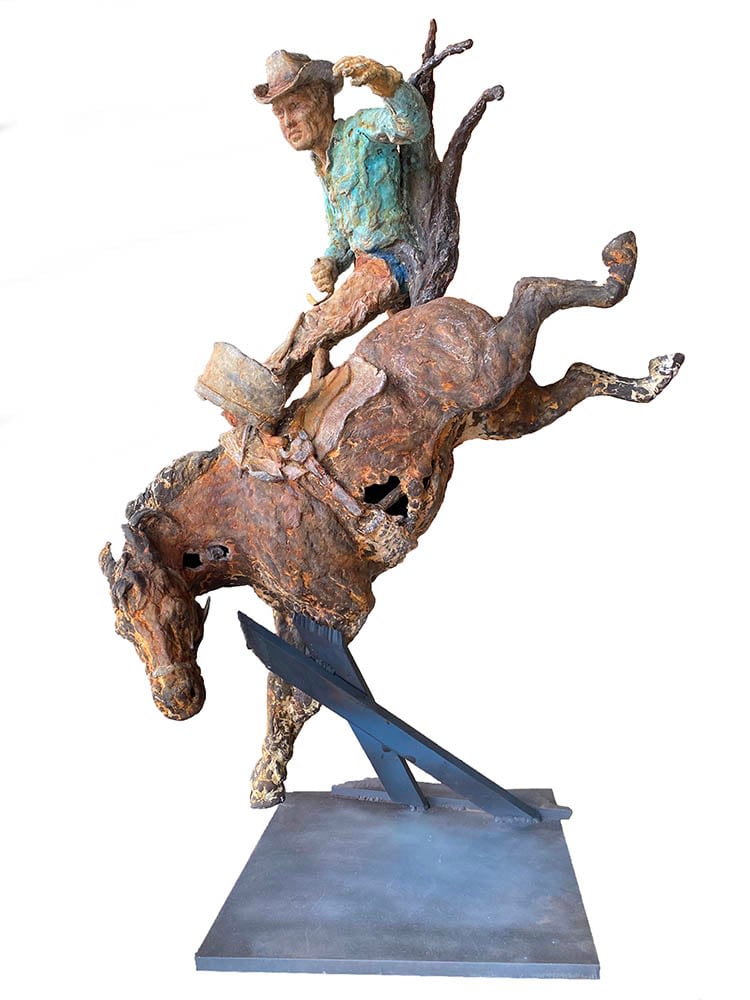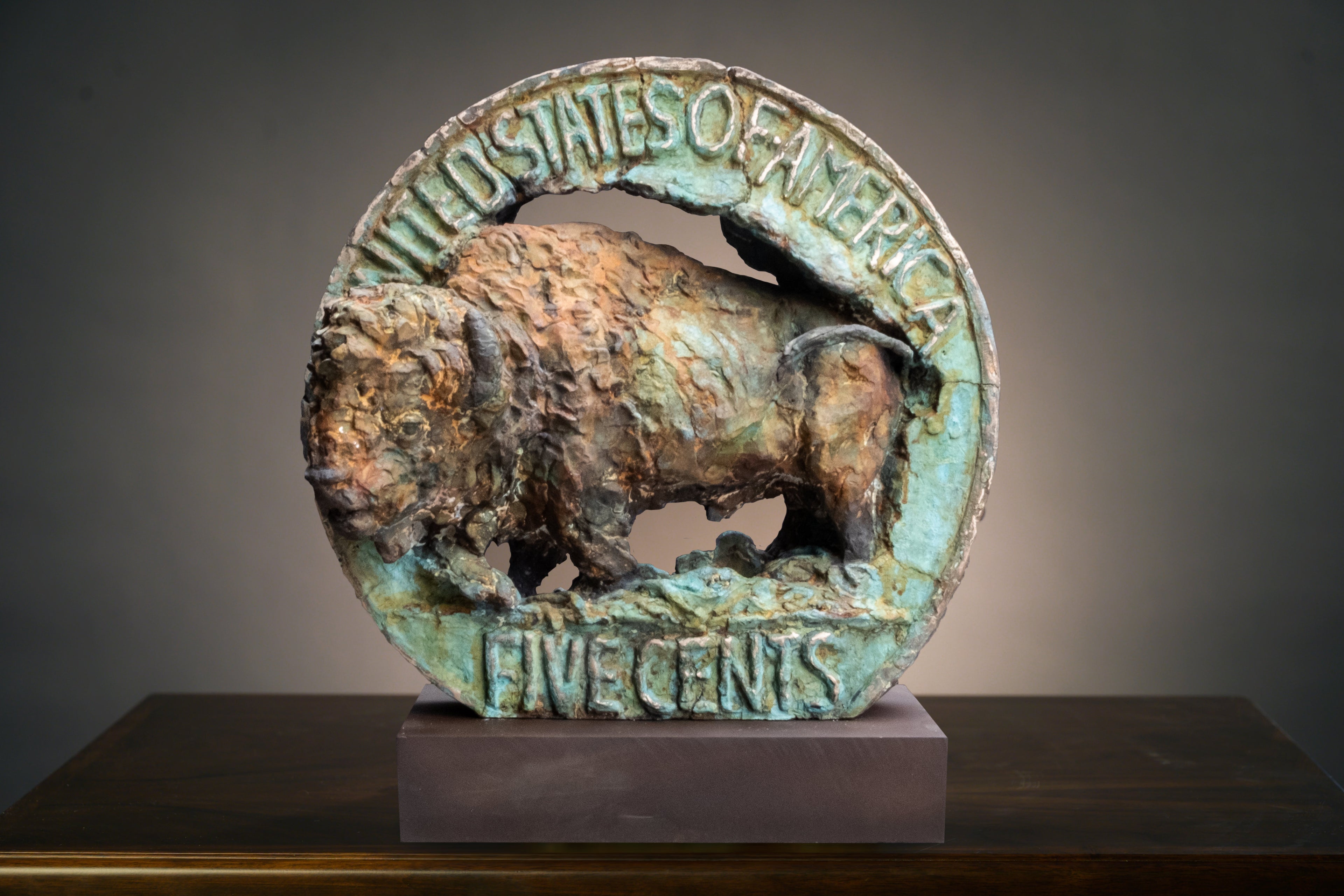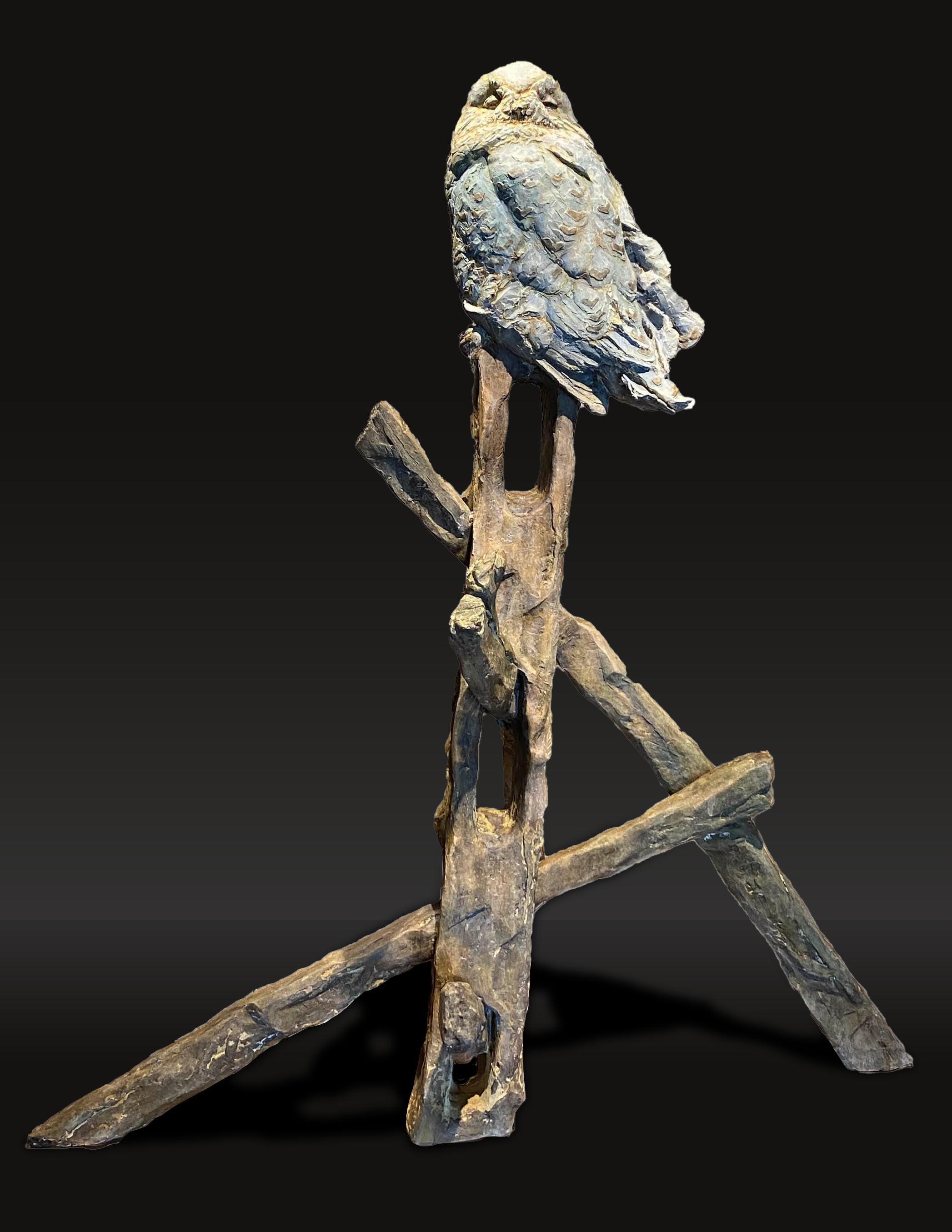Greg Woodard was born in Prescott, Arizona in 1958. Though he took a few art classes in high school, he is largely self-taught. He began by carving decoys and went on to become a five-time Best of Show winner at the Ward World Competition, and the World Class winner in 1992 with a preening American kestrel. In 2000, he captured the World category in interpretive sculpture with a rendition of a prairie falcon chasing several swallows. To date, he is the only artist to have won both decorative and interpretive categories at the world level.
As a sculptor, what makes Woodard's work unique is his patina process that allows each edition its own color and texture. He has always valued experimentation and innovation in order to further his artistic growth.
Woodard is a master falconer and has a deep passion for understanding the raptors he studies. He carries the love and knowledge from these powerful birds into his work. Woodard believes each of his pieces tells a story; he shows this through the interaction between human and animal, expressing how they are affected. Another important feature of Woodard's work is the railroad track theme, which symbolizes the cultural impact of the opening of the West.
Museum collections and public installations include the Ella Sharp Museum in Jackson, Michigan; the Ward Museum in Salisbury, Maryland; the Leigh Yawkey Woodson Art Museum in Wausau, Wisconsin; Union Depot in Ogden, Utah; and Verde Canyon Railroad in Clarkdale, Arizona. His work is featured in the book, Greg Woodard's Art of Bird Sculpture by Kurt M. Robinette.
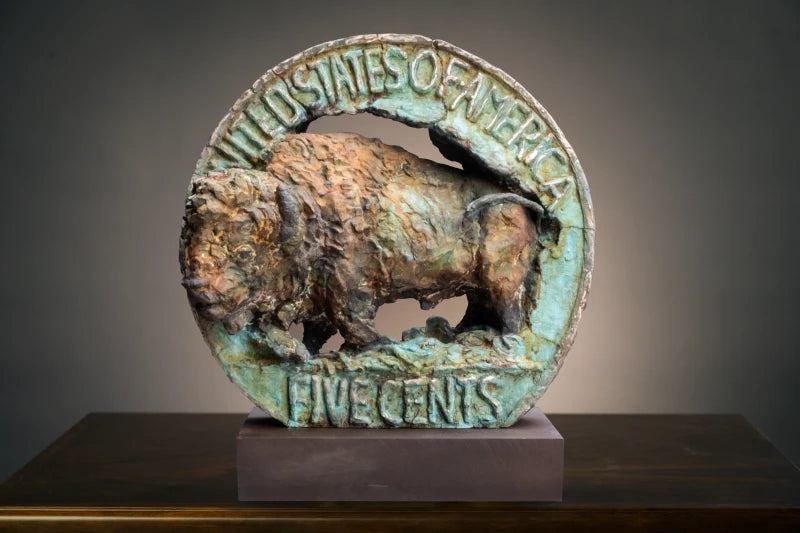

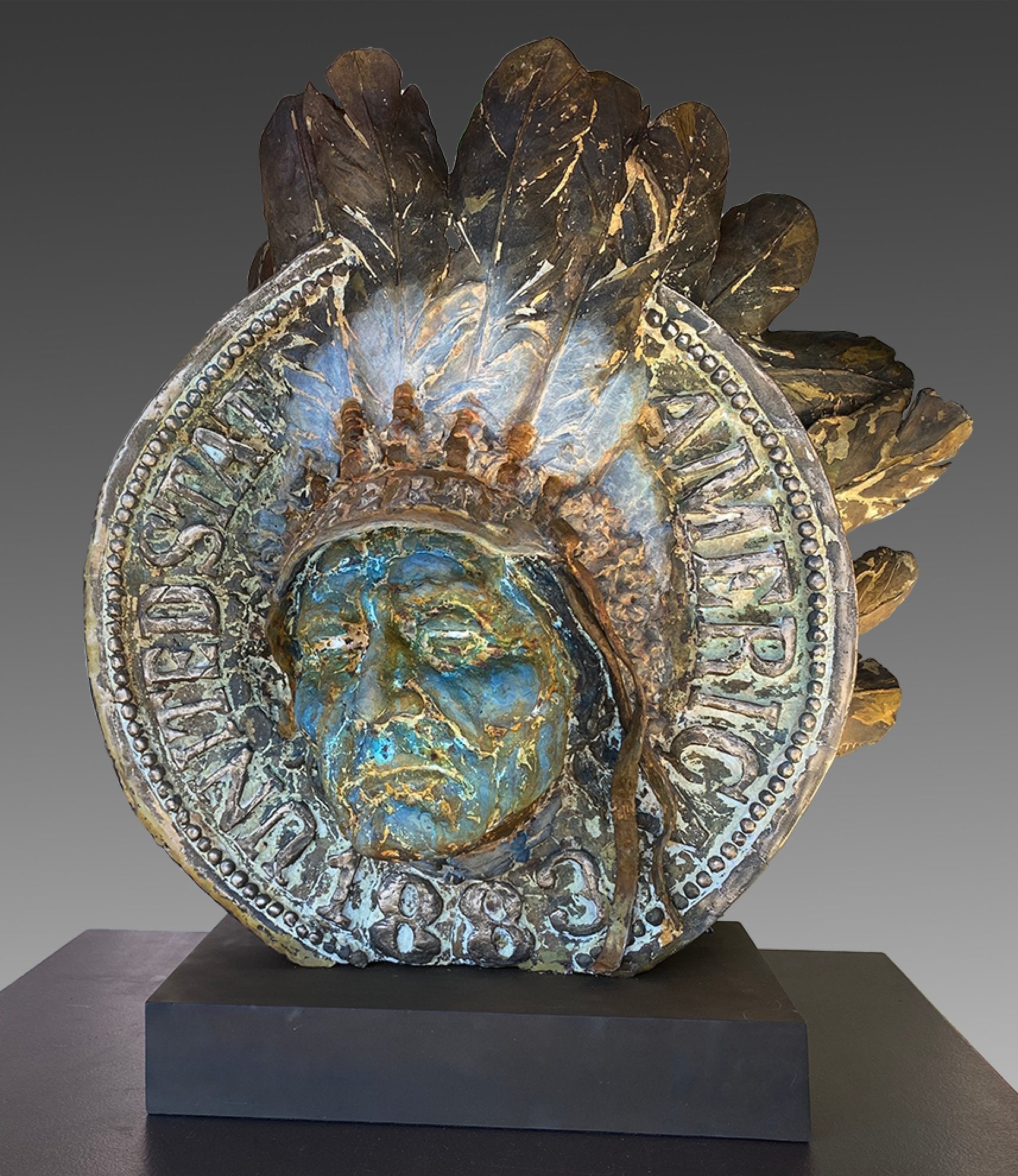 Vendor:Altamira Fine Art
Vendor:Altamira Fine Art
